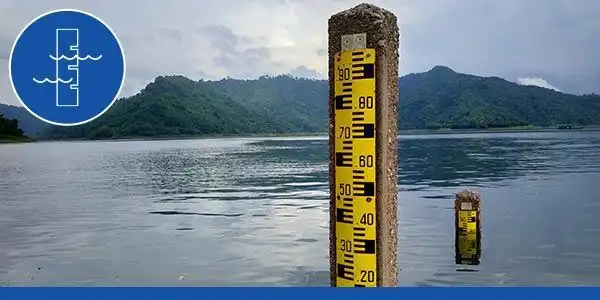Water is an essential resource for all life on Earth. It covers over 70% of our planet’s surface, and it plays a vital role in supporting ecosystems, agriculture, industry, and human health. Monitoring water quality and quantity is crucial for maintaining the health of our water bodies and ensuring sustainable management of this precious resource.
Over the years, technology has played a crucial role in improving our ability to measure and monitor water bodies. Traditional methods of measurement, such as manual sampling and analysis, are time-consuming, labor-intensive, and often prone to human error. But with the advancement of technology, we have seen an increase in the use of automated sensors, remote sensing techniques, data analytics, and other tools for water monitoring.
The Evolution of Water Measurement Technologies
Before modern technology, measuring water quality and quantity involved manual sampling, where a person would physically collect water samples and then analyze them in a laboratory. While this method is still used today, it is limited in its ability to provide real-time data and monitor large bodies of water effectively.
The use of automated sensors has revolutionized the way we measure water parameters such as pH, temperature, dissolved oxygen, and turbidity. These sensors can continuously collect data in real time, providing a more accurate and comprehensive understanding of water conditions. They also eliminate the need for manual sampling, reducing costs and potential human error.
Remote sensing techniques have also greatly enhanced our ability to monitor water bodies from a distance. Satellite imagery and aerial photography can detect changes in water quality, surface temperature, and even water levels over vast areas, making it easier to identify potential problems or trends.
Additionally, submersible pressure transducers have become an invaluable tool in the monitoring of water levels, especially in areas where accurate measurements of depth are critical for managing water resources effectively. These devices are designed to withstand the pressures of deep water, providing precise and reliable data that can be used to assess the impact of environmental changes, such as droughts or floods, on water bodies.
The integration of these advanced technologies significantly enhances our understanding and management of aquatic environments, paving the way for more sustainable water use.
Future Prospects and Challenges
As technology continues to advance, we can expect further improvements in water measurement techniques. Advancements in data analytics and artificial intelligence will enable us to process large datasets quickly and accurately, providing valuable insights into the health of water bodies.
However, some challenges come with this increasing reliance on technology for water monitoring. The cost of implementing and maintaining these technologies can be a barrier for smaller organizations, limiting their ability to participate in water management initiatives. Data privacy and ownership also remain significant concerns, as the collection of large amounts of data raises ethical questions about its use and storage.
To address these challenges, it is crucial to have strong regulatory frameworks in place to ensure responsible and equitable use of technology in water monitoring. Collaboration between governments, organizations, and communities is also essential for effective water management and the preservation of our water resources.
Conclusion
Technology has significantly transformed how we measure and monitor our water bodies. It has revolutionized data collection, providing us with more accurate and comprehensive information about the state of our lakes, rivers, and oceans. As technology continues to evolve, it will play an even more significant role in water management, helping us to make informed decisions and preserve this vital resource for generations to come.
Water is an ever-changing and complex system, but with the power of technology, we can better understand and protect it for the benefit of all life on Earth.

